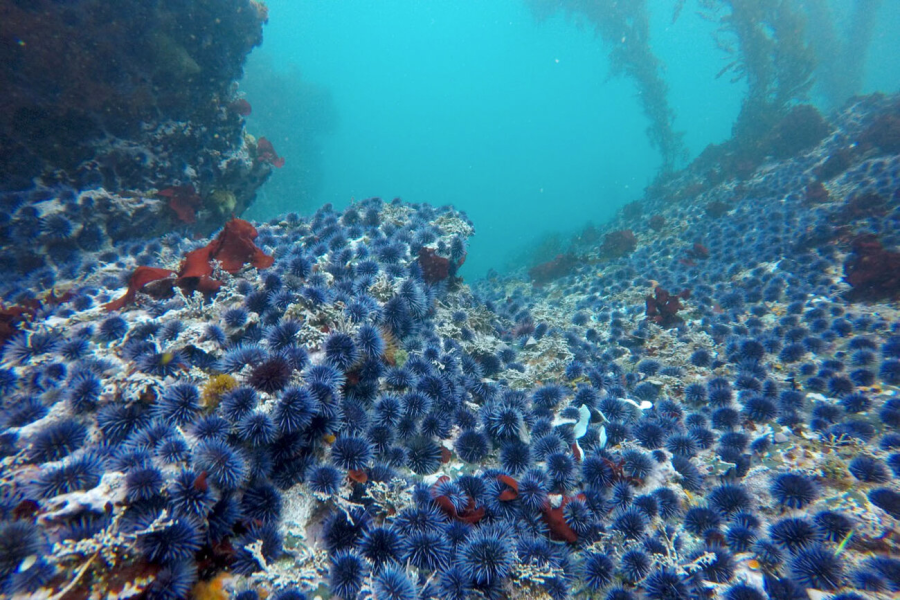A Call for Kelp!
Sea Urchins Take Over Local Ecosystem
Sea urchin’s overpopulation causes kelp destruction. (Photo courtesy of Dr. Steve Lonhart, NOAA MBNMS)
Kelp ecosystems in California are being destroyed by sea urchins and the problem’s worsened in recent years. According to National Geographic, 75% of kelp in Southern California has disappeared in the last century. Due to human impacts including climate change, the sea otter species began to disappear as well. This reduction in predators has caused an overpopulation of the purple sea urchin.
“Fishermen decided that sea otters were eating too much fish and enacted a no otter zone in California,” marine biology teacher Marta Wood said.
“This zone made it legal to kill otters [and it] wasn’t lifted until 2012. These otters eat urchins. So, after the otters were gone, sea urchin populations have continued to rise. The sea otters don’t really even eat that many fish. Losing the otters means there are less fish because the sea urchins eat the kelp which is the fish’s habitat, putting the ecosystem out of balance.”
The effects of the sea urchin overpopulation is even noticeable from above the surface, catching the attention of surfers and beach patrons.
“I have noticed that there are lots of urchins in the water and there has been a noticeable decline in kelp since past years,” senior and surfer Connor Storr said.
Sea Trees is a California based non-profit organization that seeks to restore the health of the ocean through donations.
According to the Sea Trees website, they’ve “restored more than 200,000 square feet of Giant Kelp forest. Divers identify purple urchin barrens and teams are sent to clear these areas. The Bay Foundation then monitors the progress of the site as the kelp ecosystem reestablishes itself.”
They continue to assist the local community and ecosystem with their work at White Point beach in Los Angeles.

Andrew Carpenter is the format editor and this is his 2nd year with The Point. Andrew loves fishing, surfing, cooking, and his dog Zuma.
